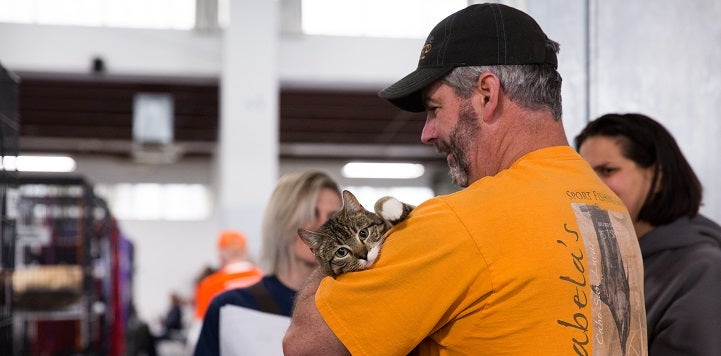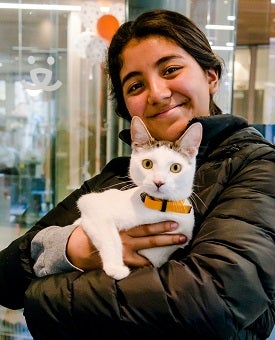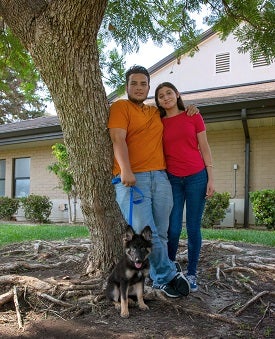
Getting the Message Out
How to Overcome Adoption and Foster Challenges in your Community
Sure, animal sheltering is a chaotic business in the best of times, but has anyone noticed that things seem even more chaotic right now? One theory about the current struggle to manage shelters at or above capacity is that people are surrendering their pandemic pets in record numbers. In fact, data from 24PetWatch shows intakes from January through July are down by 22.1% compared to 2019, our most recent “normal” year (they are 4.4% higher than 2020). No, the actual culprit behind why many shelters feel overwhelmed is a drop off in adoptions.
That same report from 24PetWatch shows adoptions for this year to date are down by a substantial 19.4% overall compared to 2019. Most of those are dogs, who are being adopted at a rate 27.6% less than in 2019 and 7.9% less than 2020. We conducted our own survey to figure out why adoptions are so sluggish and 59% of respondents who identified as prospective adopters say they are delaying the process because of returning to the office, taking vacations, starting a new job or other reasons.
Still, respondents confirmed that adoptions remain the preferred method of acquiring a companion animal, which means shelters and rescues still have an engaged audience out there. So, how can we motivate more adopters now when our kennels are full more often than they’re empty?
Take Advantage of New Marketing Materials

First, we need to make sure the message that there are lots of cats and dogs still in need of homes is getting out to the public consistently and frequently.
“People were amazing about stepping up to foster and adopt in the darkest days of the pandemic last year, but the underlying problem hasn’t gone away,” says Kim McDaniel, Best Friends senior marketing manager. “We still need the public’s help, and the more frequently people see and hear that message, the more likely they are to act on it.”
And while shelters have the most engaging content possible in the photos, videos and stories about the animals in their care, Kim notes that sometimes people just need a little extra push to see that information in a different way.
“You never know what will resonate with someone,” she says. “Changing up the imagery or using new messaging might catch someone’s eye. The more we can vary a message yet still bring it back to adoption and fostering, the more opportunities we have to compel someone to action.”
Recently, Best Friends launched a national campaign using traditional media, advertisements, and a robust digital effort to increase awareness about all those great animals still in need of homes. As part of the campaign, Network partners have access to an exclusive marketing toolkit with social media graphics, printable flyers and a customizable press release template.
“It’s our hope that partners can use what we’ve created without having to spend any time developing new content to reach the public,” Kim says. “Take what works and leave the rest.”
Dust Off the Tried-and-True Methods
Not all organizations are experiencing a lag in their adoptions. We did an unofficial poll and asked our partners to share what they are having success with. Not surprisingly, reduced/waived fees continue to encourage adoptions, and some groups are offering even more to sweeten the pot:
- In the first weekend of August, the Humane Society of Harlingen offered free vaccines, heartworm, and flea and tick prevention for a year to anyone who adopted an animal. The organization is also offering people who foster an animal for two weeks a free spay/neuter voucher for their own animal.
- Kern County Animal Services offered $5 adoptions on all shelter pets in July. The promotion ended up finding homes for 96 dogs and cats—twice as many pets as adopted in June. The shelter is extending the promotion through August.
The tried-and-true methods of getting out in the community through events are also still generating success:
- Best Friends in Atlanta has been hosting pop-up and mobile adoption events and one recent event led to a dozen adoptions (five puppies and seven kittens). Another organization noted they took advantage of the opening of a new pet supply store in town by holding a cat adoption there.
- In Houston, the Best Friends team has been doing foster rallies with a local shelter that has a mobile adoption unit. They fill the vehicle with not-yet adoption ready kittens and drive to a high trafficked area to recruit foster homes onsite. New fosters get to take home their kittens (and supplies!) immediately because all medical intake and foster onboarding is done right there. The team is finding that this approach is reaching a whole new audience, many of whom are not familiar with fostering a pet.
For organizations that are still limiting in the public’s access to their facility—and even those that are back to having regular hours—hosting Facebook Live walk-throughs to highlight the animals there is a way to continue the virtual work that began in earnest last year. Kern County has been doing such postings for more than a year and seen a very high number of viewers transition to becoming adopters.
While some groups continue to have success doing adoptions by appointment and say their community appreciates the dedicated customer experience, a few other shelters said they found the opposite to be the case. The appointment-based system didn't allow them to keep up with the volume of adoptions needed when the shelter is operating at close to normal intake levels. Don’t be afraid to try a mix of both approaches and see what best suits your community.

Try Something New
Of course, thinking outside of the box is a must. Recently, Abilene Animal Services (AAS) joined forces with another organization devoted to animals in its Texas community: the Abilene Zoo. When the zoo saw that the shelter was dealing with capacity and space issues, it offered to cross-promote the organization on its Facebook page. Those who adopt from the AAS also get four tickets to the zoo.
Finally, keep your content fresh. In addition to making use of the tools we are providing, regularly update bios and photos of your animals to keep the public engaged. New videos of that dog who has been with you for six months should pop up at the top of your social media to keep him front and center. You could also take a tip from Megan Matchett, lifesaving outcomes supervisor at Best Friends in Atlanta.
“ShelterLuv updates hourly with Petfinder, so on Thursday nights, I mark long-term animals as unavailable, which removes them from Petfinder,” she says. “Then I put them back as available the next hour, so they will appear as ‘new pets’ on Petfinder. It also puts them at the top of our Petfinder page and makes sure they are being seen. We’ve gotten multiple pets adopted this way.”
Above all, keep repeating the message that your organization relies on the public’s support.
“The kennels being full makes now the best time to get involved and save a life through fostering, adopting, and volunteering,” says Megan McCloud, senior manager of the Salt Lake City Best Friends program. “Even putting together foster supply bags for your local shelter can help.”
And just maybe, some—or all—of these ideas will help that 59% of people waiting for “the right time to adopt” to realize that, for the dogs and cats sitting in their community shelter at this very moment, right now is the right time to adopt.
Liz Finch
Senior Writer
Best Friends Network
If you enjoyed this program spotlight, you can find our complete catalog of spotlights here.